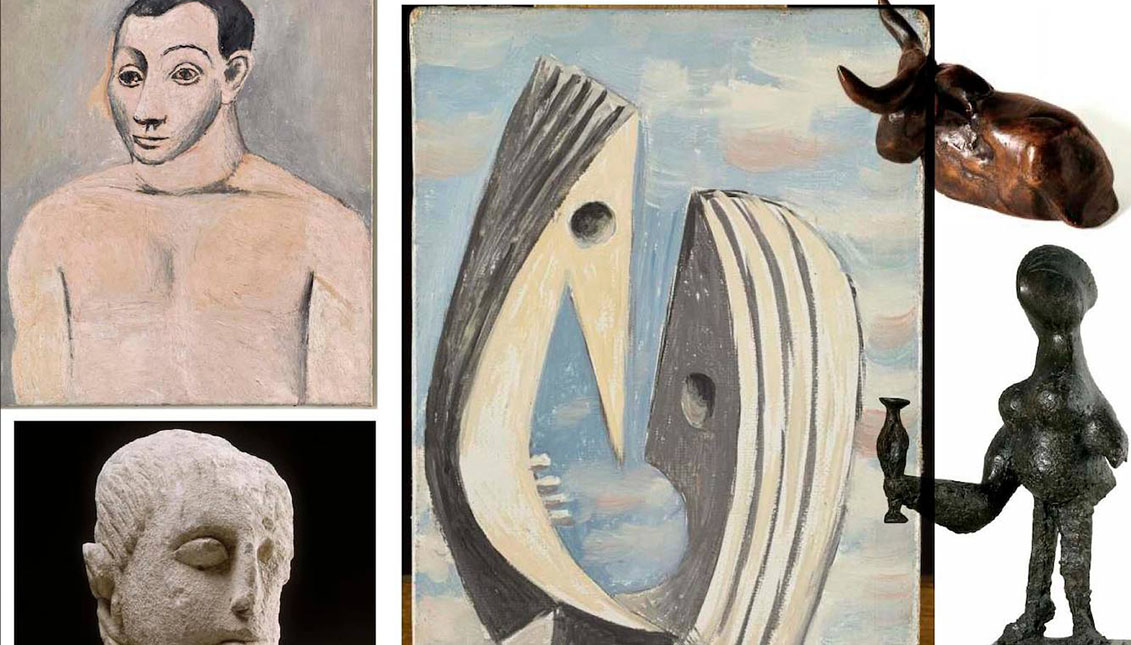
The ancestors who inspired Picasso to develop Cubism
It is ironic that it was in Paris and not his native Spain that the genius painter discovered the Iberian sculptures he later turned into the fire of his art.
One summer in 1906, a young Pablo Picasso, not yet 30 years old, had a great revelation while visiting an exhibition of Iberian art.
The Iberians, so called by the Greeks because they shared a common language, were a group of warrior tribes located on the coast and in the east of the Iberian Peninsula who came to be federated and about whom little is known today, such as that they had a naturalist religion and worshipped bulls and pigeons, and that they had numerous trade relations with other Mediterranean peoples, such as the Phoenicians.
Curiously, Picasso did not discover their sculptures in his native Spain, but in one of the antique rooms of the Louvre in Paris. And from then on he gradually abandoned his pink period to give shape to a primitive art, with figures with hieratic faces, vertical cheekbones, minotaur heads and earthy colors that would end up being the seed of Cubism.

"Picasso came to revere the archaic Iberian sculptures because they were one of Spain's rare contributions to the art of antiquity and also because they represented his own roots," wrote art historian John Richardson. "They had been carved by mixed-race people who — like his own family - had migrated to Andalusia before moving to the north. In addition to their atavistic charm, their crudeness and lack of distinction were the work of someone who was eager to demolish traditional canons of beauty.
RELATED CONTENT
Works such as the sculptures of the Cerro de los Santos or the famous "Lady of Elche" truck a chord with the artist, and over the following months he devoted himself to producing works inspired by them.
Now an exhibition in Spain, at the Centro Botín in Santander and in collaboration with the Musée national Picasso-Paris presents the Iberian Picasso, the one who immersed himself in atavistic mysteries to bring something completely new and groundbreaking to life.
Like Les Demoiselles d'Avignon, Guernica, the sculpture of the Bull Spilt, Woman with a Vase - which is inspired by the "Lady Offerer" from the Iberian sanctuary of Cerro de los Santos - works that are indebted to the past and converse with it. A game of mirrors.
He was so fascinated by Iberian art that Picasso also became a collector and acquired up to a hundred Iberian pieces. Two of them were two men's heads that had been stolen from the Louvre in 1907 by Géry Pieret, a Belgian swindler and adventurer, and sold to the artist - they were hidden in a cupboard in Picasso's studio until he returned them to the museum in 1911.
Of course, primitive African art also influenced the artist, as did Cézanne's technique, which both Brache and Picasso seized upon at a time - the first decade of the 20th century - when photography had freed painting from its role as an identical copy of reality. As well as psychoanalysis and interest in the fourth dimension in geometry and the theory of relativity.
But this chance encounter with the roots was for Picasso a new way of expressing the complex dimensions of reality whose folds link the past with the future and, above all, the present.











LEAVE A COMMENT: